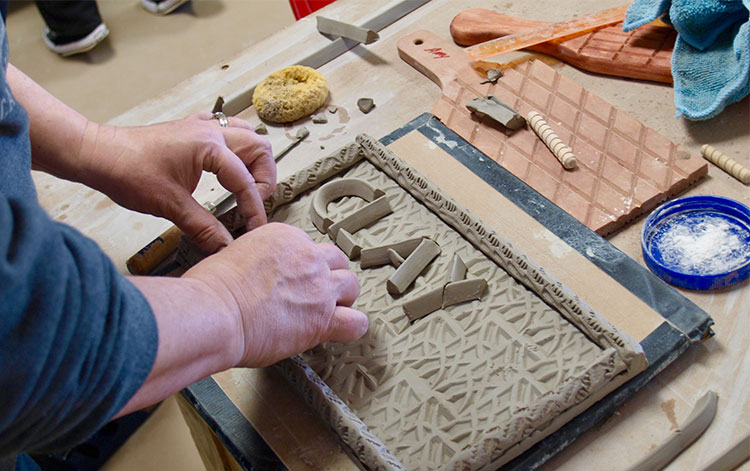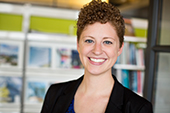Libraries are embracing the maker movement, giving patrons a place to create.
From the very beginning, I’ve loved making stuff. In kindergarten there was always something to cut, glue, and give to Mom. In college, construction paper gave way to wood models for my architecture professors. Making ignites my creativity. There’s nothing like starting with an idea, manipulating it, developing it, and ending up with a unique and tangible result.
Turns out, I’m not alone. The emerging “maker movement” is a global community of DIYers, hackers, and making enthusiasts who gather to create, learn, and share their skills in an open-source, community environment. Because it’s a shared experience, makers are emerging from basements and garages in search of public places that provide resources and guidance to bring their ideas to life. You’ll never guess which popular, constantly evolving community resource is stepping up to fill that role: libraries.
Modern tools, age-old passions
The importance of making is much the same as it was generations ago. It’s still about using tools and materials to turn thoughts into products and questions into solutions. But today’s toolbox includes an amazing range of inspiring new technologies. Computer-aided drafting (CAD) and computer programming connect makers to advanced digital manufacturing processes such as 3D printing, 2D laser cutting and Computer Numerically Controlled (CNC) milling. These machines, once much too expensive for the masses, are now more affordable. With the tools available and the makers assembled, the last piece of the puzzle is finding a workshop to bring all of their imaginative ideas to life. The solution is called the makerspace.
![]()
An opportunity for public libraries
The core mission of public libraries has always been to connect patrons of all ages to information and knowledge. It’s no secret that public libraries have seen tremendous change to their service model with the arrival of the digital age. As libraries strive to ensure their continued relevance in their communities, many have focused on improving the customer experience, repositioning the library as a community hub instead of simply a depository for books. The maker movement supports this “more than just books” model extremely well. A number of public libraries have embraced the maker movement enthusiastically and are providing hands-on learning opportunities like never before.
Dr. Stuart Brown, founder of the National Institute for Play, describes play as a catalyst. “The beneficial effects of getting just a little true play can spread through our lives,” he wrote, “actually making us more productive and happier in everything we do.” (Brown pg. 7, Play: How it Shapes the Brain, Opens the Imagination, and Invigorates the Soul.) Ask any enthusiastic maker, and they’ll tell you it’s about experimentation, creativity, discovery…in other words, play.

Academic libraries, too
If your university has makerspace-like areas (i.e. wood shop, metal shop, and/or digital labs with 3D printers) more times than not, these spaces aren’t open to all students, faculty, and staff. These resources are most likely only available to students enrolled in design and engineering classes. This is a HUGE missed opportunity in higher education.
The academic library on campus can give fair and equal access to the maker movement. It’s the perfect place to house these tools and knowledge. Integrating a makerspace into academia sends a message that hands-on learning is a valued form of education, while developing critical thinking and problem-solving skills. By its nature, making combines learning styles, cross-disciplinary interaction, and collaborative innovation. In other words, the kinds of skill needed for success after college.
The same way community need should shape a public library’s makerspace, student need should inform the tools and programs available in an academic makerspace. The heart of the campus — the source of its intellectual pulse — isn’t the student union, it’s the library. This is the real hub of activity and innovation, and a natural place for more than just meeting, but making.
Making a Makerspace
Step 1: Make a list of criteria ![]()
Think big-picture categories: Patrons, staff, facility, budget.
Possible questions:
- What are the community’s needs?
- What programs could be / should be offered?
- What tools are needed? (hardware / software)
- How much staff can be dedicated to the makerspace?
- Is there a makerspace champion on staff or is it a new hire?
- Community partnerships?
- Budget?
- Physical space allocation: new or existing?
Step 2: Location of your makerspace ![]()
Libraries have started to move away from the quiet archive model and the “no food, no drinks, no noise” mantra. Café-style browsing and studying with a cup of coffee has become the norm in the digital age. The makerspace will challenge the traditional model — especially in terms of noise level. Groups of people get loud, tools get loud, and having fun gets loud, especially if it involves excited kids and teens. Location is a major consideration when both quiet and noisy activities happen in the same building.
Considerations:
- Locate the makerspace in an active zone of the library. This is often adjacent to the main entrance
- Easily accessible
- Visible to the public
- Choose a location that can create buzz about the makerspace and the explorations it houses
- Locate for afterhours access
Step 3: The Room Flexibility is the name of the game. ![]()
Considerations:
- Floor to ceiling glass
- Washable finishes; walls, floor, ceiling, etc.
- Scrub sink
- Power and data needs
- Good internet access, both WIFI and hard connection
- Adequate ventilation
- Pin-up space, billboard, or projection to showcase your maker community (show and tell)
- Projection for presentations and/or instruction
- Whiteboard
- Big, flexible tables for group interaction and group creation
- High tech and low tech tools
- Storage for projects and extra materials
Step 4: Consult a design professional ![]()
Considerations when consulting a design professional:
- Find a design partner that understands your organization
- Partner with someone who has your best interest at heart
- Partner with people who are experienced and passionate about libraries and makerspaces
Useful Links to inspire and inform
Learn about The Bubbler, and other similar community maker efforts, below.

Megan Stuart // Project Associate
As a design professional, public library board member and overall library enthusiast, Megan is passionate about solving problems through creative thinking. Currently working on both public and academic library projects, Megan finds joy pushing past standard solutions to achieve a higher level of design that addresses both the aesthetic and functional needs of the owner. Her desire is to deliver the best in client service and her design abilities will translate the client’s vision into a functional, sustainable, and elegant design.
